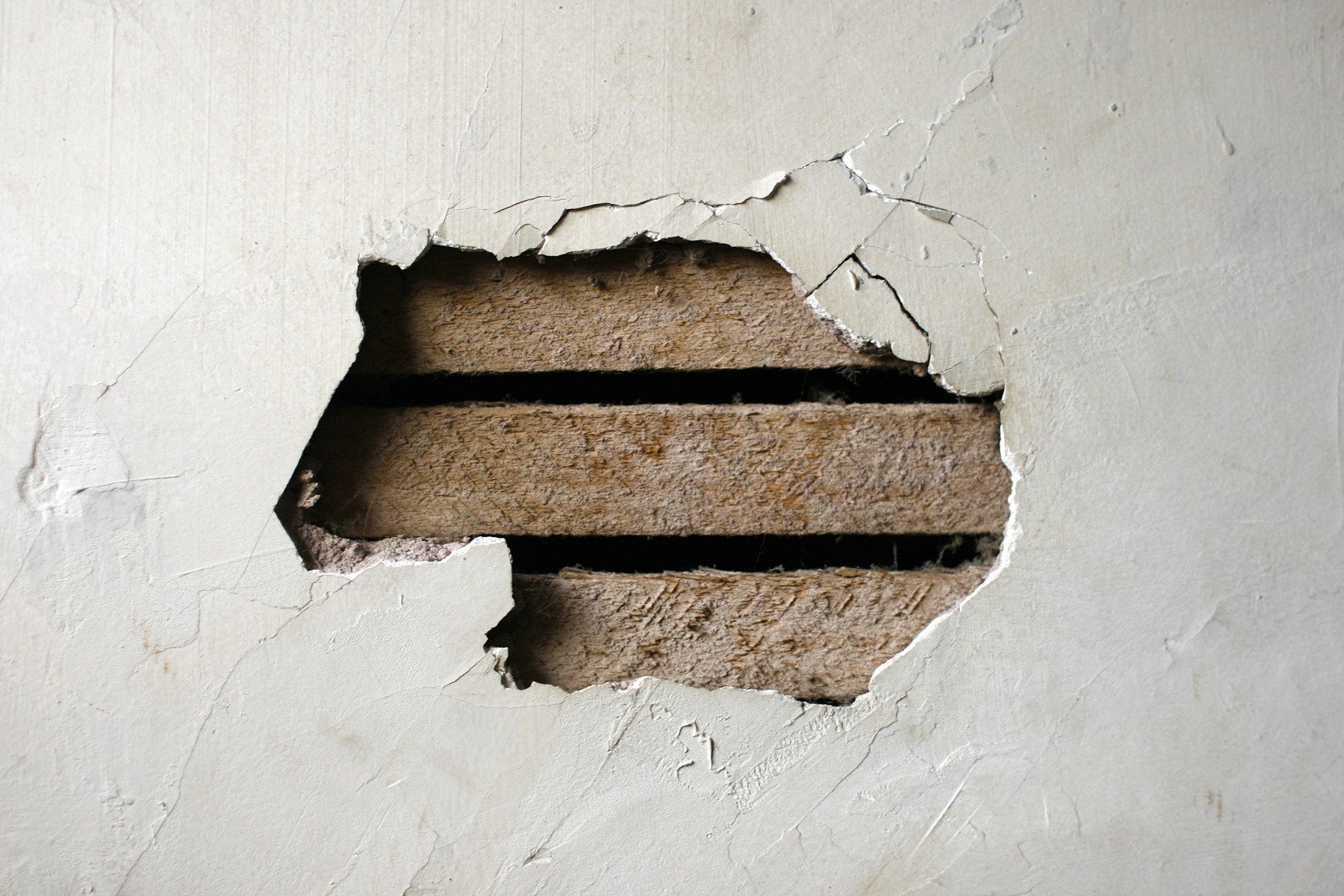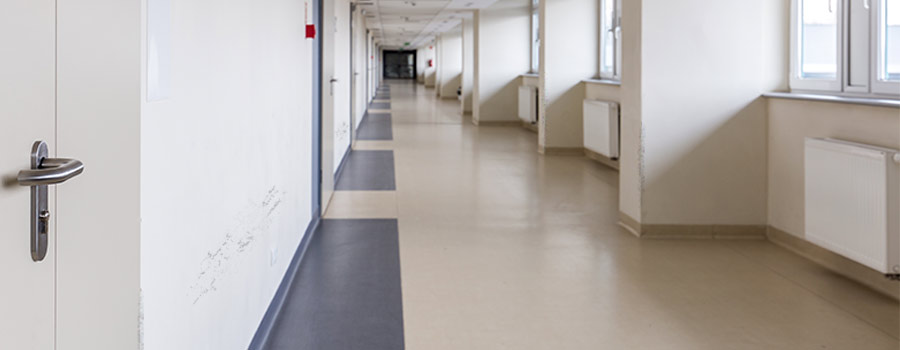
4 Reasons You Should Invest In Interior Protection
Facility managers and maintenance teams must be on top of their building’s interior appearance. When their walls, corners, doors, corridors, lobbies, bathrooms, or any area become unsightly, the door, corner and wall damage should be repaired with urgency.
Whether for safety reasons, building functionality, or to uphold a flawless interior that helps boost and maintain high occupancy, it is essential to quickly repair or update the damaged area.
Architects and interior designers also need to counsel owners to think beyond first-cost value engineering to ensure that their design stays looking good well beyond the first year or two.
The best repair is the damage that never happens in the first place. The key is to gain upfront knowledge and understanding of how to protect the vulnerable areas of facilities. We break down some mistakes in building design and maintenance that can be resolved before a facility is built or renovated that will save time, money, and resources in the long run.
When it comes to keeping a building’s interior looking newer longer, here a four things to look for or consider.
1.) Your building is brand new, but looks like a war zone with wall damage

You can take the following to the bank – if interior protection got value engineered out of your new building, you’ll be calling Acculine within six months complaining of the damage you’re seeing. Trust us. We know.
A classic case comes from a retail department store chain. Corporate design standards scrimped on interior protection as part of the construction budget – things like cart guards, corner guards and rigid sheet wall cladding. The store’s general manager had to call about six months after the grand opening to complain that the Customer Service desk and changing room walls were damaged, gouged, scraped and bashed.
This is a common occurrence and nuisance for facilities with a high volume of foot and service cart traffic, prime examples are: healthcare, aged care, education, hotel, convention centers, retail, and airport facilities.
Solution: Install adequate interior protection before you open the door to prevent wall damage; or if you’re already open … it’s not too late … do it now!
2.) The Hall of Shame
Take a tour of your facility with the eye of a newcomer and you’ll notice dozens of consumer turnoffs, from scarred doorjambs and soiled carpet, to hand-lettered signs taped to the walls.
Substitute “the facility” with “your hotel,” “your office building,” “your restaurant, ”your school,” or “your store” and you get the picture.
Your parents always said you only get one chance to make a first impression. They were right. Every scuff, scrape and gouge on interior doors and walls is a potential black mark against your building.
Solution: Turn your hall of shame into your hall of fame with our Palladium Rigid Vinyl Wall Sheet
3.) The chronic do-over of building maintenance
Just about every facility has that handful of areas that are constantly getting bashed and slammed. Usually it’s a door or door frame, a corner or a section of wall in high-traffic corridors or lobbies. If the wall damage is in a public space, you don’t want to leave it looking wrecked, so someone on the staff is assigned to repair the corner, door, or wall … again … and again … and again.

So, doing a little ballpark figuring, let’s say that a corner, including dry wall and painting repair, gets fixed three times a year. By the time the workman:
- Loads up the work cart with tools and materials
- Moves to the damaged area
- Preps the area (including putting up dust barriers)
- Tears out the old
- Cuts and installs the patch
- Preps and paints or covers the wall
- Cleans up the area (including dismantling the dust barrier)
- Moves back to the maintenance or carpentry shop
- Unpacks the work cart and discards the scrap
How much time – in dollars – are we talking about?
Oh yeah, don’t forget the time lost while he or she goes back to the shop because somebody didn’t put the box of drill bits back where it belongs!
What are we talking? Maybe $250 each repair. Now, multiply that by 3 repairs a year and you’re talking $750 or more.
Solution: Install one high-impact corner guard at a typical price of $40 (in just a few minutes) and you’re $710 in the black, and that’s on labour alone. Say that corner guard stays in place for five years; then you’re $3,550 to the good.
4.) Installation of Cheap Alternatives

This is the evil twin of value engineering. It usually starts with the building manager or owner saying, “Go down to the local home improvement store and get some of those clear Bunnings corner guards.”
Cheap wall protection products might work, but our experience is … it rarely does. Sure, clear corner guards can work in some situations, but most of the time, folks underestimate the level of traffic and equipment traversing the space and/or the level of impact on the surface.
Going cheap almost always ends up being more expensive, because you end up repurchasing the same cheap product over and over or experiencing the issue mentioned in Reason #3, and you still struggle with wall damage.
Solution: Take a look at areas experiencing damage, then choose interior protection products that are engineered and built to stand up to the impact.
_________________
Interior Protection Solutions
Architectural interior building products that protect facilities from daily abuse
Now that you understand the importance of utilizing interior protection products, here are some critical products to prevent wall damage and protect your facilities appearance long after the doors open.
- High Impact Corner Guards – Great for high-traffic areas that receive not so friendly encounters with service carts
- Tape-on Corner Guards – Ideal for low-traffic areas
- Wall Guards – Perfect solution for healthcare facilities that see a lot of cart traffic
- Rigid Vinyl Sheet Wall Cladding – Ideal for ALL facilities
- Printed Palladium Wall Protection – Liven up walls with images, designs, branding, etc… Printed Palladium combines the durability of Rigid Sheet and the flexibility to use any image or design into your wall
- Chair Rails – Perfect for lobby and waiting areas that have guest seating
- Handrails – Primarily used in healthcare and senior living facilities, handrails not only provide assistance and safety for those who need them, they also protect your walls from damage
- Door Kick Plates – Ideal for Aged Care, Healthcare facilities, Education facilities and back of house areas
- One Piece Door Frame Protection – Essential to making your doors look brand new
